Wood & Douglas (W&D) – Company History
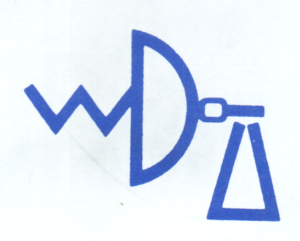 W&D was founded in 1977 when Alan Wood (G4EEE) and John Douglas (G8MGC) began undertaking part time sub contract work to create printed circuit board designs and prototype wiring for various companies in the Reading area. Both were employed full time at a local government establishment, Alan as a physicist and John as a drawing office engineer.
W&D was founded in 1977 when Alan Wood (G4EEE) and John Douglas (G8MGC) began undertaking part time sub contract work to create printed circuit board designs and prototype wiring for various companies in the Reading area. Both were employed full time at a local government establishment, Alan as a physicist and John as a drawing office engineer.
Initially they traded as a partnership. Both partners were radio amateurs and regarded the part time work as a means of funding their hobby activities.
Within a few months Mike Telkman (G8DCA), a design engineer, joined the partnership and produced the first RF design for a UHF crystal controlled FM transceiver. At this time Phase 2 UHF FM repeaters were rolling out in the 70cms band. Apart from Pye, Burndept and Storno PMR radios, there was not much hardware available to get operational on 70cms.
Mike’s design lent itself to home construction and it was decided to offer both kit and assembled versions to the amateur market. The first public offering was at the Woburn Rally circa 78/79. A number of repeater groups latched onto the products at the event including Norwich and Andover. Word spread quite quickly about the potential of the products and a slow trickle of mail orders began to arrive.
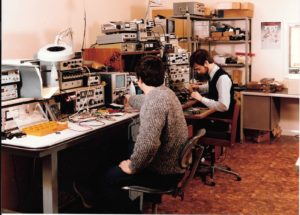 Given the skills of the three partners the work load was fairly clearly defined. Mike did the designs, John the pcb layouts and Alan the logistics of marketing and sales. In the early days all activity took place at Alan’s home where the printed circuits were made, kits put together and kit notes photo copied. Given no ability to produce plated through boards, the home made boards were electro-less tin plated and all ground plane earthing in the construction had to be done by ‘soldering both sides’.
Given the skills of the three partners the work load was fairly clearly defined. Mike did the designs, John the pcb layouts and Alan the logistics of marketing and sales. In the early days all activity took place at Alan’s home where the printed circuits were made, kits put together and kit notes photo copied. Given no ability to produce plated through boards, the home made boards were electro-less tin plated and all ground plane earthing in the construction had to be done by ‘soldering both sides’.
Add on products began to appear to expand the amateur range including crystal based multi-channel operation, power amplifiers and pre-amplifiers together with general accessories such as tone bursts, pip and kay tones. The range expanded further to 2m products and a first synthesiser was developed for 2m. In future years this would further expand into ATV products at 70cms and 24cms.
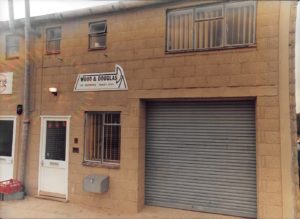 The work load had now significantly increased and most evenings and weekends were spent servicing orders and attending events around the country. Neighbours became involved to produce the kits and to assemble completed modules – it was a real cottage industry.
The work load had now significantly increased and most evenings and weekends were spent servicing orders and attending events around the country. Neighbours became involved to produce the kits and to assemble completed modules – it was a real cottage industry.
What had not been anticipated was that the amateur customers had also an interest in the products for commercial use. Quite quickly the partnership began to receive orders for higher specification products to meet a professional application. One such early order was for a number of 30W UHF power amplifiers for BBC radio cars.
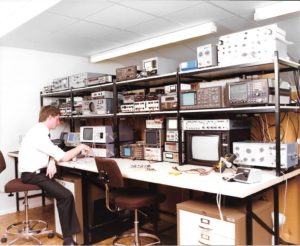 Around this time John moved his full time job and decided to drop out of the partnership. Having established a name in the market the decision was made to retain the name and for Mike and Alan to continue trading. This lead to Alan moving to full time working from home in January 1982 and premises at Unit 13 Youngs Industrial Estate were rented later in that year. This period saw a major contract with the Dutch company Phillips for a UHF paging transmitter.
Around this time John moved his full time job and decided to drop out of the partnership. Having established a name in the market the decision was made to retain the name and for Mike and Alan to continue trading. This lead to Alan moving to full time working from home in January 1982 and premises at Unit 13 Youngs Industrial Estate were rented later in that year. This period saw a major contract with the Dutch company Phillips for a UHF paging transmitter.
Expansion continued into Unit 12 which was adjoining Unit 13 to give 4000 square feet of trading space for the complete design, manufacturing, marketing, selling and admin activities. The amateur radio products were still selling well but commercial work was now beginning to dominate.
By late 1989 the Company had outgrown Unit 12 and 13. Sales were circa £2m and staff levels had reached almost 20. Commercial market sales were now spread over telemetry, broadcast and security with a low level of amateur products now more a background activity. A major contract with the BBC for studio radio talkback gave the momentum and confidence for a move to Lattice House in Baughurst. Products were beginning to be designed in surface mount technology and space was needed for expansion of the associated manufacturing processes. Lattice House gave a floor space of almost 10,000 square feet and was to become the home of the company.
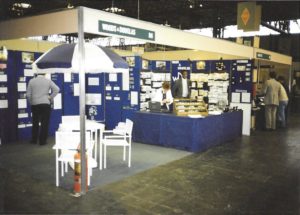 The partnership became a limited company in 2000 and Mike was soon to retire. Following Mike’s departure Alan restructured the company and created a new internally promoted management team. This team would be complementary and successful, taking the company forward in the following years to its eventual sale in October 2013 to Ultra Electronics.
The partnership became a limited company in 2000 and Mike was soon to retire. Following Mike’s departure Alan restructured the company and created a new internally promoted management team. This team would be complementary and successful, taking the company forward in the following years to its eventual sale in October 2013 to Ultra Electronics.
At the time of the sale the company had reached a turnover of £8m, employed over 70 staff and had been awarded the Queen’s Award for Export. It had retained its ethos of being in control of its own destiny by undertaking as much of the design and manufacturing process as possible in house, albeit across four UK sites. These sites included a state of the art surface mount production facility capable of placing 20,000 parts per hour and a CNC machine shop for the product housings. The Company also grasped the potential advantage that computerisation could bring to their processes. Computer aided design was employed and intertwined in pcb and mechanical product development with 3D simulation extensively used to bring products quickly and efficiently to market. Back office efficiency was provided by a fully integrated accounting and manufacturing software package and bespoke records database.
The Company had become internationally famous in so many areas of radio communication where bespoke radio products needing specialist skills were in demand. W&D products using both analogue and digital techniques could be found on airborne platforms, diamond mines, military systems and utility monitoring networks. The company could take a client’s outline desire to use radio for an application and from this deliver a total solution that was technically and commercially compliant. The amount of repeat business from these worldwide clients gave a clear indication of the respect that W&D had managed to achieve in its 36 years of trading. In those 36 years the total sales income totaled almost £100m – not a bad contribution to UK plc from small beginnings of three radio amateurs in a back bedroom and garage.
W&D was a company where people liked to work. The longest serving member of staff was Alan’s old next door neighbour from when the business first started, the most recent member had about 5 years under their belt, and the estimated average person had over 10-15 years service.
From what I can gather now, W&D was closed down in 2016 and all the staff made redundant.
UPDATE: some of the key members of Wood & Douglas have now formed Mandar Solutions…they are currently servicing former Wood & Douglas clients whilst developing new technology and products. Their website is HERE.